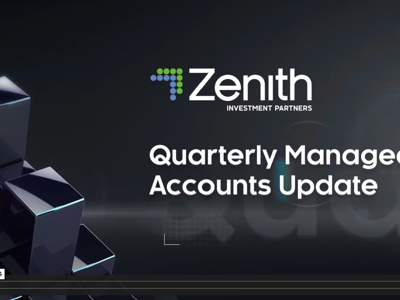Managed accounts are anything but a new phenomenon. However, the number of providers offering and funds under management in managed accounts has grown in leaps and bounds over the past few years.
This has resulted in a few changes in how advisers interact with managed account providers, including a number of positive developments that help deliver a more efficient and effective investment solution to clients.
What’s changed and what does it mean for advisers?
Much has changed in the years since the first managed account was offered to a client. To start with, the platform and responsible entity requirements from an onboarding and annual due diligence process are now more intensive.
Providers of managed accounts need to be able to provide reporting to investment committees, reporting to advisers and reporting to the adviser’s end clients to even be considered for inclusion on a platform. This initial due diligence is an essential requirement for being onboarded as a provider of managed accounts on most platforms.
For advisers, this means more robustness around the managed accounts on offer through platforms and the confidence that regular reporting, in addition to what needs to occur prior to onboarding, provides more transparency and better risk management practices.
More investment options
Given the volatile market environment of late, managed account providers, and advisers that use them, need the ability to generate returns from markets that are not just trending upward.
For a long period post the GFC, the performance of most alternatives and alternative strategies was relatively disappointing compared to equity market returns. Hence, there was a lot of pushback with regards to including them within portfolios. However, the recent market correction is a reminder that equity markets don’t go up for ever. We believe investments like managed futures and global macro market neutral strategies are important portfolio inclusions and are going to be very valuable in the short to medium term.
The importance of rebalancing
Another issue that floats to the surface during market volatility is the importance of flexibility around the ability to rebalance and execute trades and make changes in managed account portfolios. The way providers go about these important rebalancing processes is important.
In our view, you should not just run an automated process that rebalances your portfolios. Such practices can lead to numerous small and frequent transactions, which will chew up buy/sell spreads, which for investors in accumulation can have a negative tax impact. Rather, a proper trading and execution approach, which requires a subjective overlay, is more important.
Finally, and perhaps most positively, due to the increased scale of managed accounts, fund managers have started to adjust their fees. While not on the scale of institutional money, they recognise there is significant funds under management and are starting to offer discounted unit class prices, rather than fee rebates which was the practice in the past. This offers significant efficiencies for all parties involved, while ensuring end clients reap the benefits of scale.
Checklist
Considering the above changes and developments, the following checklist provides a good starting point for advisers considering a new managed account provider, which may be of assistance during this somewhat onerous process:
- Consult with provider on portfolio requirements - be as specific as possible.
- Confirm the number of portfolios and risk profiles on offer – do they meet your practice’s needs?
- Investment philosophy and process – does this align with your practice’s philosophy?
- Return and risk requirements of portfolios – are these appropriate for your clients?
- Types of portfolios, accumulation, retirement, inclusion of direct equities / listed securities – as mentioned above, non-traditional assets have been missing on model portfolios but should play a bigger role going forward.
- Portfolio fee budget (overall investment management cost) – is this palatable for your clients?
- If your business has multiple platforms, is there consistency of portfolios across platforms?
- Platform selection – there are several providers, many of which your practice may already be using. Is it easier to use a platform you are familiar with?
- Consider appointing a managed account model manager within the practice.
- Responsible entity (RE) selection and engagement – while the most common option is the platform RE, there are also a handful of independent REs if that is your preference.
The last word
While we can all agree that managed accounts are here to stay, it's important to keep on top of what is changing in the industry, to offer the most appropriate investment options for your clients.




